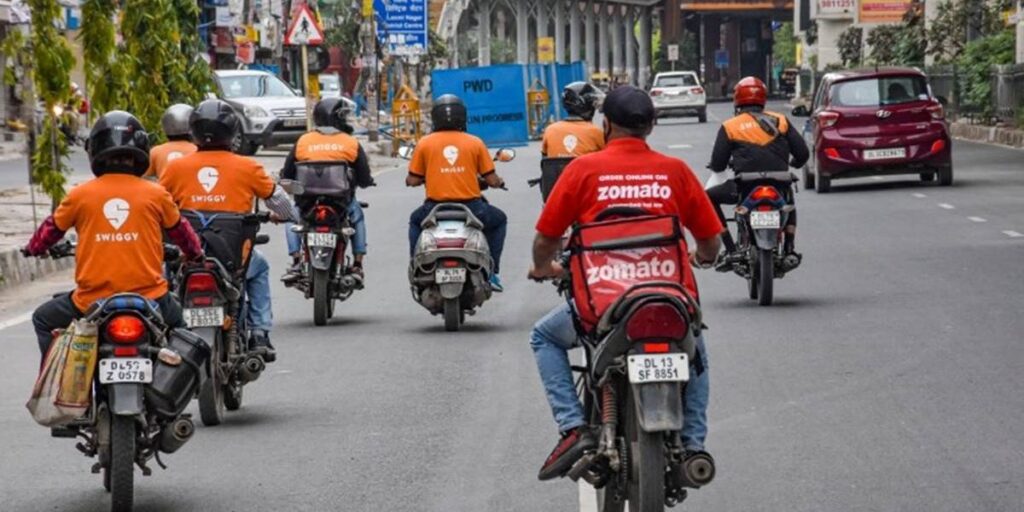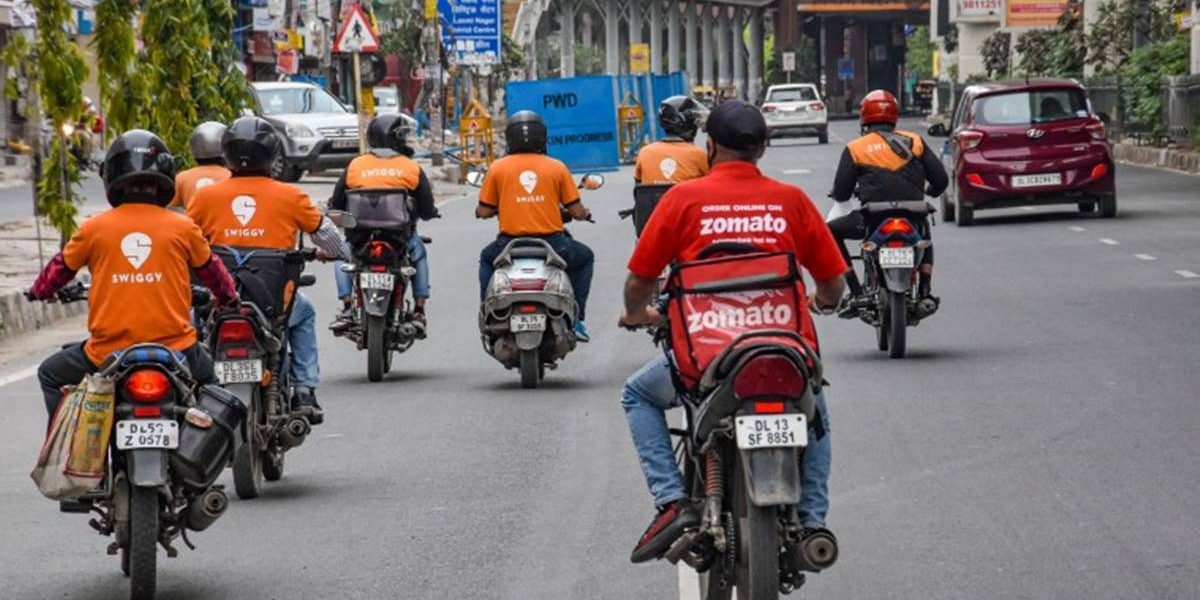
It seems almost opportune to think about the concept of ‘precarity’ when we are in the throes of a pandemic. COVID-19’s sudden spread and the policies implemented to counter it have led to an unravelling of social and economic relations, producing a feeling of great uncertainty. This feeling of uncertainty is rooted in job insecurity which defines most lives and informs our sense of present circumstances and the future. This experience has been conceptualised as both ‘risk’ (Beck,1992) and ‘precarity’ (Bourdieu,1998:85)[i] and is one that many of us have likely experienced in some way, and which is enhanced in periods of crisis such as the pandemic. But precarity existed even before the pandemic. The proliferation of jobs that are short-termed and not high paying has meant that precarity – experienced as tenuousness in the present and the inability to plan for the future and think ahead – has been a global experience.
What then, if any, is the value of conceptualising this experience? Are there different ways of experiencing precarity? Is it experienced primarily by some communities or groups? And what are the social implications of this experience? These questions can help unpack what is meant by the term which has become increasingly popular to not only describe but also analyse the social and political conditions that define the working and living conditions of the masses globally.
Politically, the term gained currency in Europe through the late 90s and early 2000s during struggles waged by the unemployed and those who were casually employed or were ‘intermittent workers’ (Mitropolous, 2000). In fact, Bourdieu (1998) was central to raising the issue and crisis of precarity borne of globalisation. But whether the varied participants of these struggles – working classes, ‘creative workers’ such as artists and professionals (those who were only intermittently employed) – were rendered as similar political subjects by their precarity was a debatable subject.
In other words, did these varied participants constitute the ‘precariat’, a class defined by their subject positions within a globalised capitalist economy? For those who believed so, the prevailing condition where jobs no longer offered stability and where precarity and risk of losing jobs – and with it, all related means of security such as housing, health etc – loomed large built the foundation for such a class position. Standing (2010) believed this was indeed the case, and that the world was on the precipice of revolutionary political action, with the precariat as the vanguard.
However, this has always been a contentious position. Precarity, as a defining feature of the class, assumes that precarity is uniformly experienced by all those affected. A focus on the empirical however alerts us to the papering over of significant differences that take place when we focus on precarity as a feature of the labour market alone. Questions of caste, race and gender, immigration status produce critical differences in the experience of precarity. Even within the context of labour relations precarity alone does not build a class. A common set of interests comes to be definitive in defining classes – the IT worker and the cleaner at the IT office can hardly be termed as members of the same class. As powerful as the mass mobilisations in Europe in the late 1990s were, they were not a form of class action. Despite Standing’s optimism, it is unlikely that highly skilled professionals will find long-lasting common cause with working classes when their relation to capital stands distinct.
Further, it is vital to ask the question – what is new about precarity? Mitropolous (2005) considered the question to think about whether the term offers any possibilities and whether it is indicative of something distinctive. The answer to both, she argues, can be found in subjecting precarity as a condition to historical analysis. As Mitropolous (2005) argues, the term is largely ‘unwieldy and indeterminate’ and suggests an experience that is not new but one which has always been present since precarity has informed the world of work under capitalism, even in its private and unpaid forms (2005:3).
In other words, the experience of full-time stable work and the security it afforded has been the exception and even when present was largely limited with race, caste and gender, setting the terms of inclusion and exclusion. In India, where stable full-time work has always been only a narrow sliver of the world of work, one must consider whether precarity has anything to offer even descriptively, let alone analytically. Yet it is undeniable that as an experience, precarity has become more pervasive. The range of labour struggles in India in recent times – of agrarian workers, health workers and gig workers- are indicative of a struggle against precarity. Yet to simply suggest that precarity has always informed social relations under capitalism, is a disservice when the task at hand is to analyse precisely how this is constituted.
Precarity is thus always dynamic, leading to Mitropolous’s characterisation of it as unwieldy. But a closer and more considered look also offers an opportunity to understand how relations of labour are being constituted under different stages of capitalism. In our contemporary context, where technology plays an important role under capitalism, the world of work is being reconfigured to blur lines between formal and informal, casual and daily work and between being employed and self-employed. These are not merely distinctions of nomenclature but point to far-reaching changes on how the worker, the workday, leisure and the self are defined. Technology-driven work – such as work in the gig economy- increasingly being held up as the model for how service economies ought to function are creating short term ‘gigs’ or jobs in which people work for limited wages. These jobs and the gig economy are celebrated for ‘disrupting’ older forms of work and creating work that centres autonomy and freedom of workers. But precarity offers an opportunity to unpack and examine this new world of work where under the garb of flexibility workers must engage in multiple ‘gigs’ to make living wages and where freedom from supervisors on the job is replaced with technology-driven control and even surveillance. The particular ways in which technology-driven platform work induces precarity is thus distinct.
Again, it is vital to note the interface of technology and work under capitalism is not new. However, for us to understand how lives are structured around work, it is imperative to be able to qualify and understand the difference that digital technology has made to the labour process. Digital technology is not quite the ‘disruptor’ it is made out to be; there are a great deal of continuity between previous forms of precarious work and precarious workers and new ‘digitally legible’ (Woodcock and Graham, 2020:23-25) forms of precarious work and workers[ii]. It is precisely this continuity that demands we pay closer attention to the constitution of precarity not just as an experience, but as an integral element of labour relations under capitalism.
The pandemic has heightened this existing precarity. In the gig economy, for instance, food delivery gig workers -marked as essential workers and who continued to labour through the lockdown- were rendered precarious through high risks of contracting Covid. Yet gig platforms profiting through this high-risk labour also absolved themselves of any responsibility for workers. The recent spate of protests by Swiggy workers demanding their incomes not be cut further demonstrates this acute precarity, where workers must engage in high-risk work to survive, but are also deemed as ‘independent contractors’ who chose to work under these conditions, freeing platforms to profit without tying them to workers in any meaningful manner.
Precarity remains an academically and politically vital concept when it is deployed to make sense of how and why workers experience conditions of work and life, and as the basis to consider labour relations and link it with systemic forms of discrimination such as caste, race and gender. it. Where the concept has fumbled has been in considering it as the sole basis of political mobilisation, such that the differences between different kinds of precarious workers are rendered meaningless. Thus, even as we all suffer the consequences of the pandemic, it would be fallacious to suggest that we do so equally and similarly. The concept of precarity – utilised in the right manner – can avoid these clumsy generalisations, opening a path to understanding both the particularity of precarity and its generalisable nature in the history of capitalism.
References:
Beck, U. (1992). Risk Society; Towards a New Modernity. London: Sage.
Bourdeiu, P. T. (1998). Acts of Resistance; Against the Tyranny of the Market. New York: New Press.
Mitropoulous, A. (2005, 03). Precari-Us? Retrieved from transversal texts: https://transversal.at/transversal/0704/mitropoulos/en
Standing, G. (2011). Precariat; The New Dangerous Class. New York: Bloomsbury.
Woodcock, J., & Graham, M. (2020). The Gig Economy, A Critical Introduction. Cambridge: Polity Press.
[i] Bourdieu claims the ‘précaité’ is a ‘new mode of domination in public life, based on the creation of a generalised and permanent state of insecurity aimed at forcing workers into submission, into the acceptance of exploitation.’ (1998:95). See also Woodcock and Graham (2020:17).
[ii] For instance, hiring domestic workers who are typically women from working classes and exploited castes through apps.
***
Gayatri Nair teaches Sociology at the Indraprastha Institute for Information Technology (IIITD), Delhi (IIITD) and works on urban informal labour.
